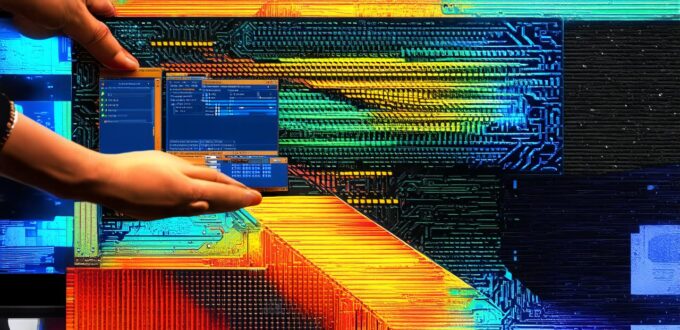1. Understanding File Systems
Before diving into the details of operating software, it’s essential to understand file systems. A file system is a way of organizing files on a computer’s hard drive or solid-state drive (SSD). It allows you to create folders and subfolders, name and rename files, and manage your storage space.
There are two primary types of file systems: FAT (File Allocation Table) and NTFS (New Technology File System). FAT is commonly used on flash drives and other removable storage devices, while NTFS is the default file system for Windows operating systems.
When installing software, it’s crucial to pay attention to the file system requirements of the program. Some software may require a specific file system or have limitations on how much storage space it can use.
2. Installing and Updating Software
Installing software is a critical aspect of operating a computer, and it’s important to do it correctly to avoid any issues. There are several ways to install software:
- Downloading the installation file from the software’s website or app store and running it manually
- Using a package manager like apt (for Linux) or Homebrew (for macOS) to automatically download and install software packages
- Installing software via the Windows Store or Google Play Store on a mobile device
When updating software, it’s essential to keep in mind that some updates may require a restart of your computer. It’s also crucial to ensure that you have the latest security patches for your operating system and any other software you use.
3. Using Command Prompts and Terminals
Command prompts and terminals are powerful tools that can help you navigate your computer’s file systems, manage files and folders, and run commands directly from the command line. Here are some tips for using command prompts and terminals:
- To open a command prompt or terminal window on Windows, press the Windows key + R, type “cmd” and press Enter. On macOS or Linux, open Terminal by searching for it in Spotlight or Applications.
- To navigate your file system, use the “cd” (change directory) command followed by the name of the folder you want to move to. For example, “cd Documents” will change your current directory to the Documents folder.
- To list the contents of a folder, use the “ls” command. To search for files within a folder and its subfolders, use the “find” command followed by the search term and path.
- You can also run commands directly from the command prompt or terminal window. For example, to install software using apt on Linux, type “sudo apt-get install [software name]”.
4. Managing User Accounts and Permissions
Managing user accounts and permissions is crucial for ensuring that your computer’s files and folders are secure. Here are some tips for managing user accounts and permissions:
- Create separate user accounts for different users, each with their own login credentials and permissions. This helps prevent unauthorized access to sensitive files and folders.
- Use the “chmod” command on Linux or “icacls” command on Windows to set file and folder permissions. For example, “chmod 755 [file name]” sets read, write, and execute permissions for the owner of the file (7), and read and execute permissions for everyone else (5).
- Use encryption to protect sensitive files and folders. Encryption ensures that even if someone gains access to your computer’s hard drive or SSD, they won’t be able to read the encrypted files without the proper decryption key.

5. Troubleshooting Common Software Issues
Software issues can be frustrating and time-consuming, but with a few troubleshooting techniques, you can often fix them quickly. Here are some common software issues and how to troubleshoot them:
- Slow software performance: If your software is running slow, try closing other programs that are using up resources or upgrading your computer’s hardware. You can also try disabling unnecessary startup programs or cleaning up your hard drive with a disk cleanup tool.
- Software crashes or freezes: If your software crashes or freezes, try restarting your computer or running the program in compatibility mode if it’s an older version of software. If the issue persists, try searching for solutions online or contacting the software vendor’s support team.
- Virus or malware infection: If your software is infected with a virus or malware, scan your computer with an anti-virus program and remove any threats that are found. You can also enable automatic updates for your anti-virus program to ensure that it has the latest protection against new threats.
Conclusion
Operating software on a computer is essential for software developers, and by following these best practices, you can make the most of your software experience. From managing user accounts and permissions to troubleshooting common issues, understanding how to operate software on a computer can save you time and frustration in the long run. So, take some time to learn about these fundamentals and apply them to your daily work as a software developer.
